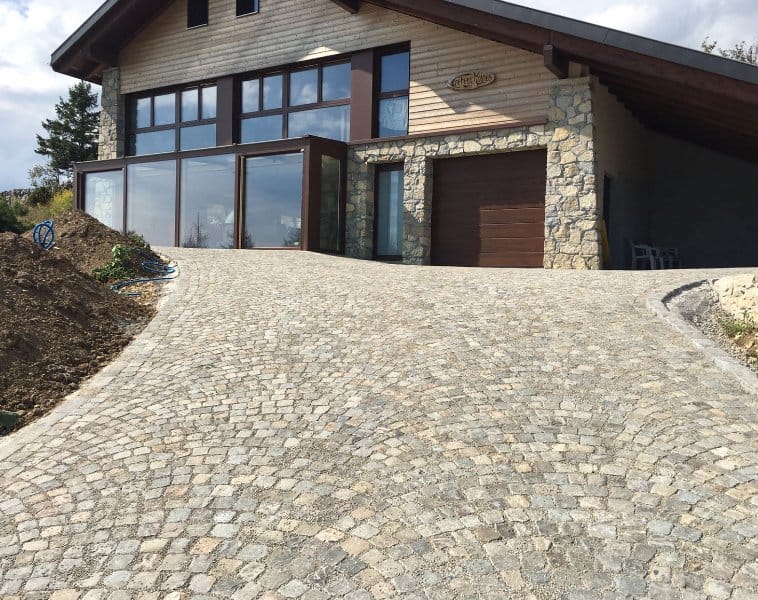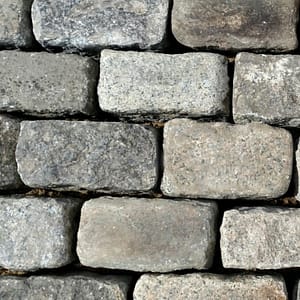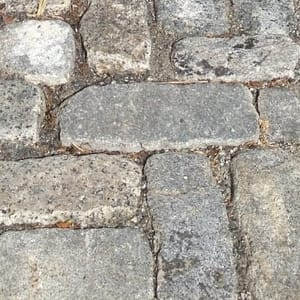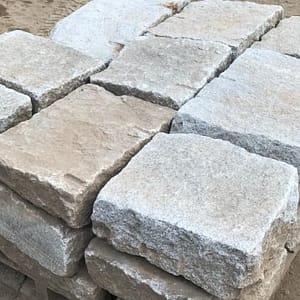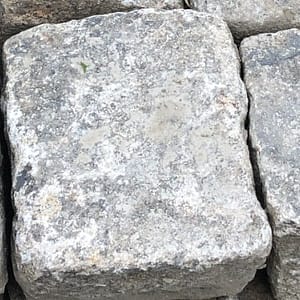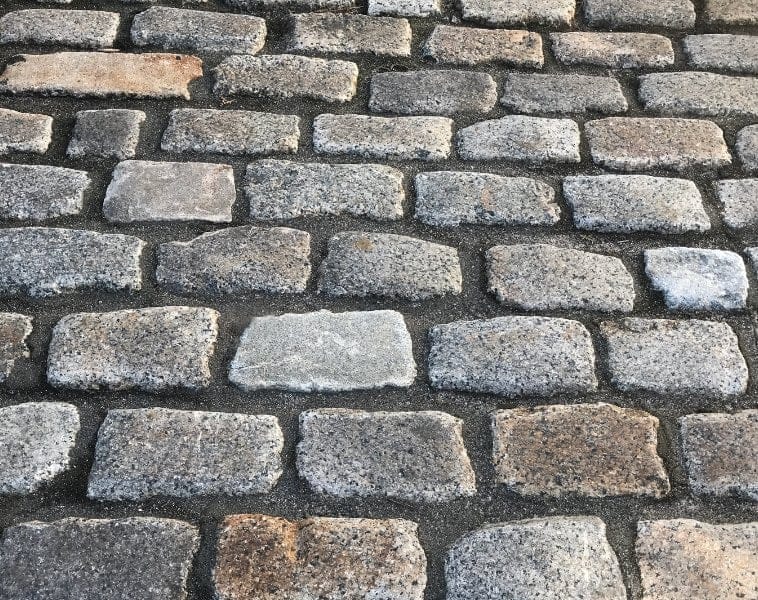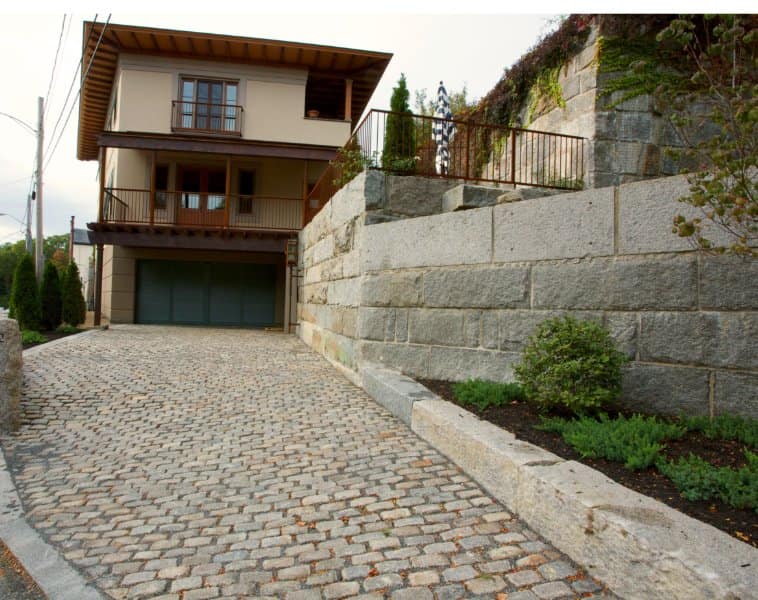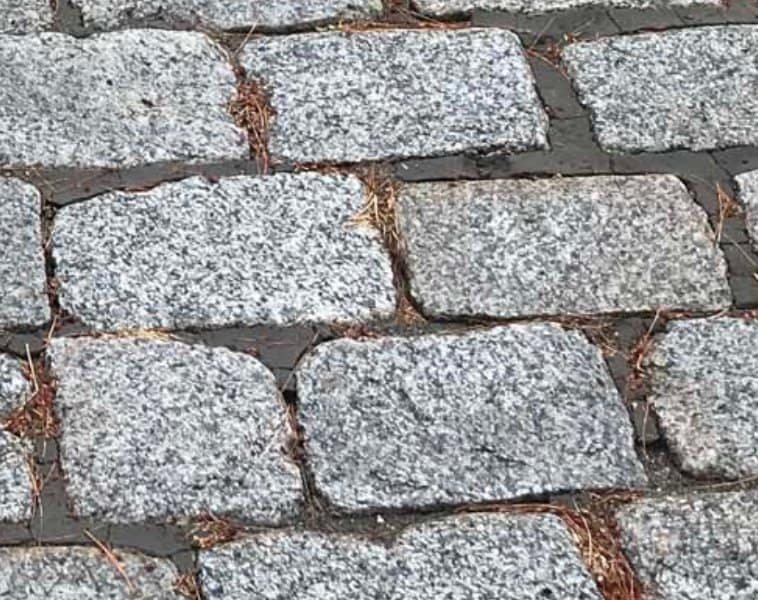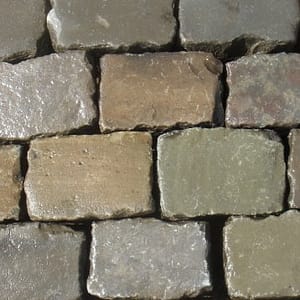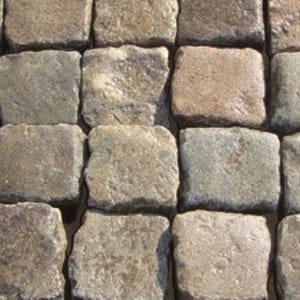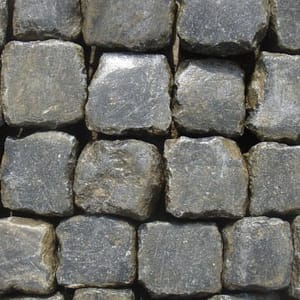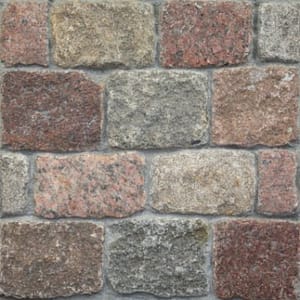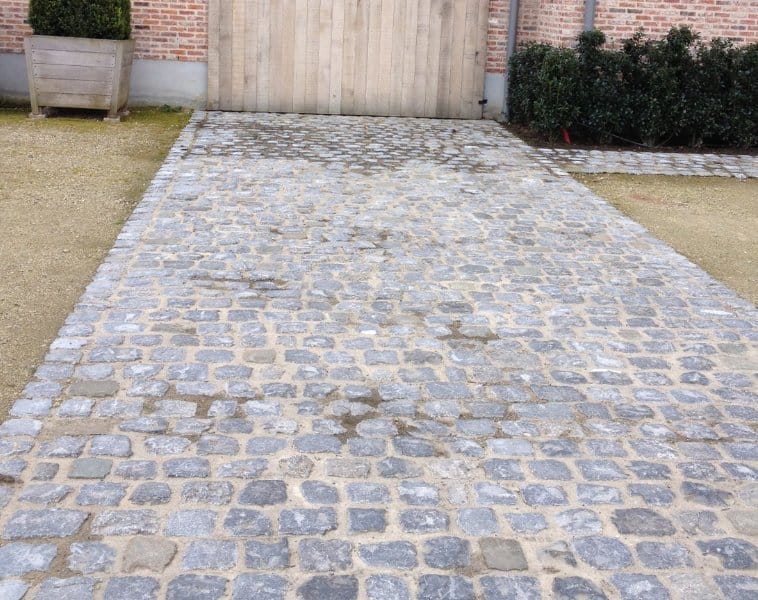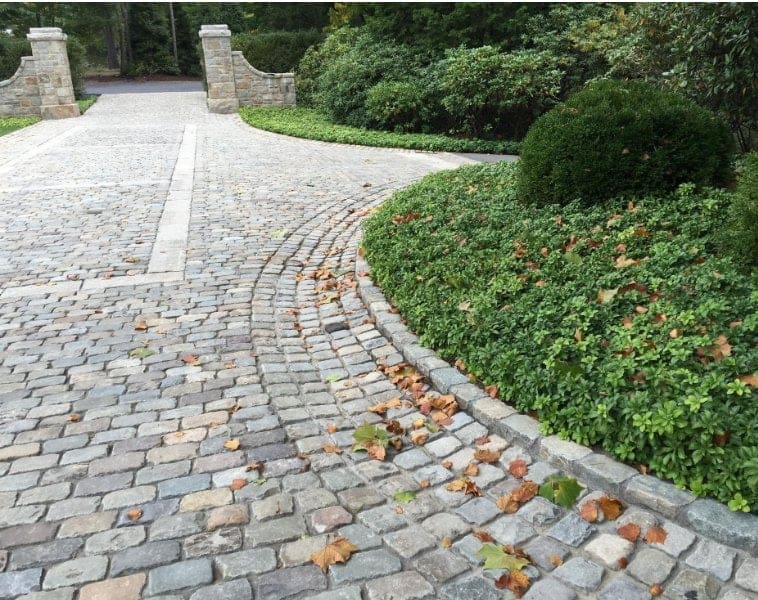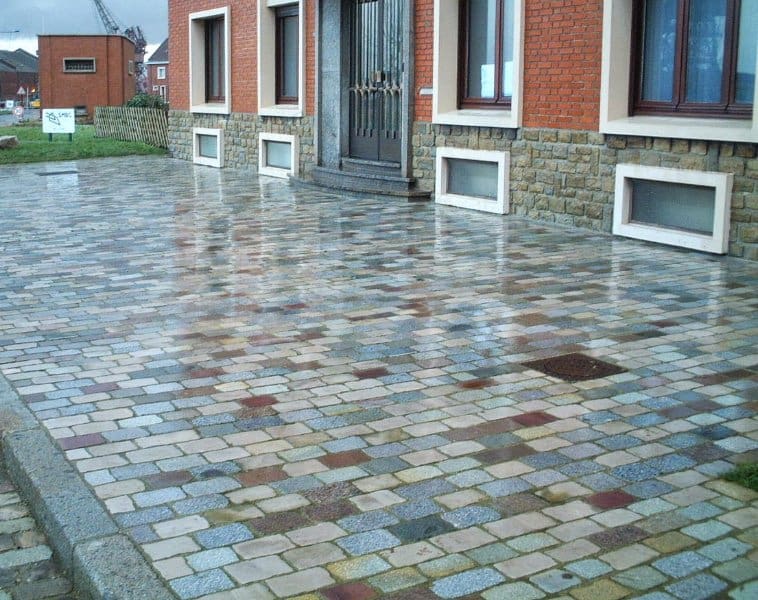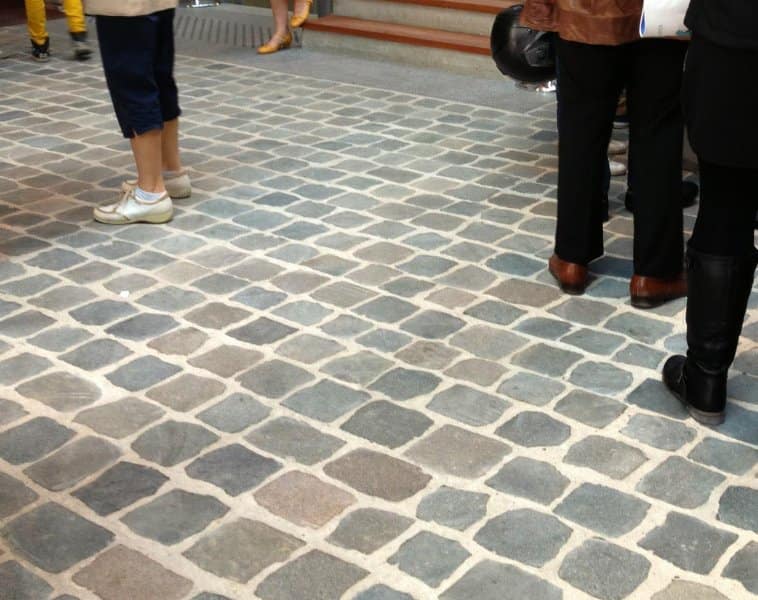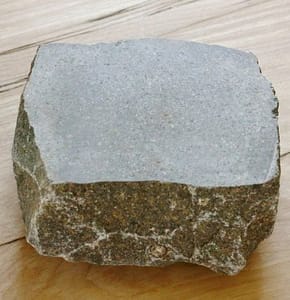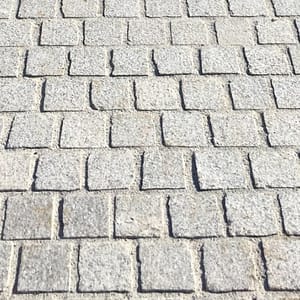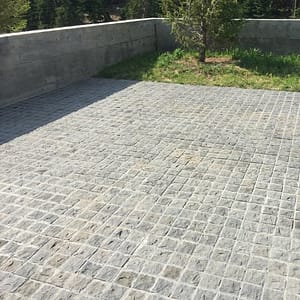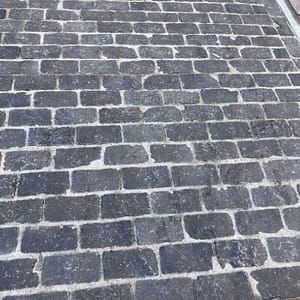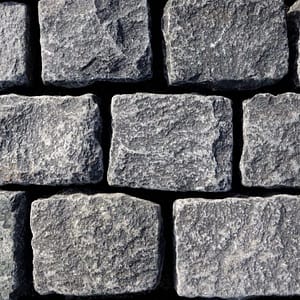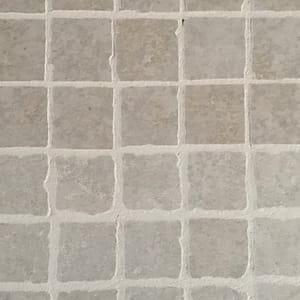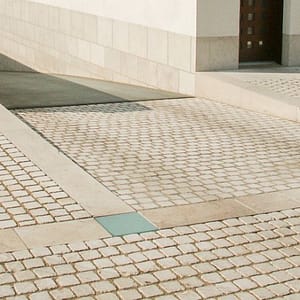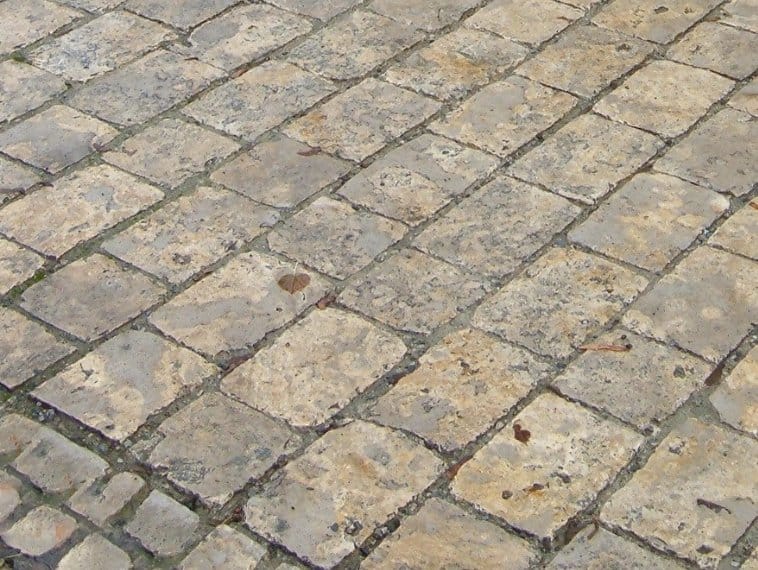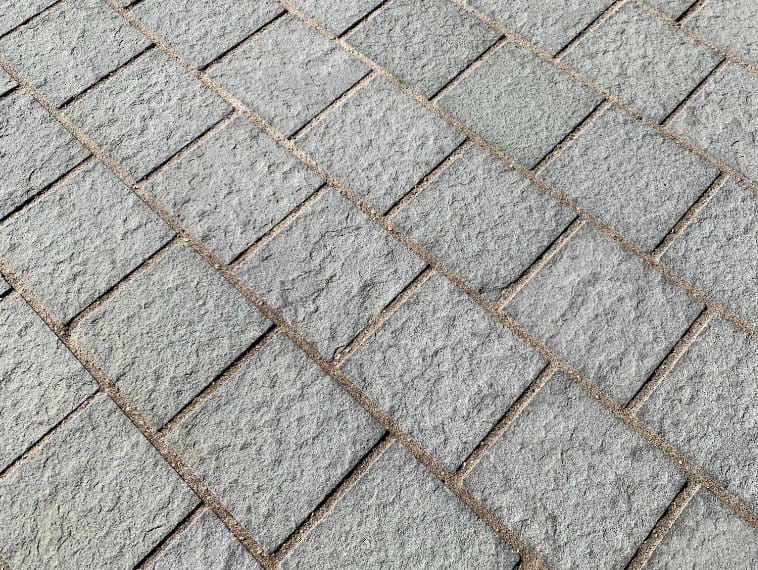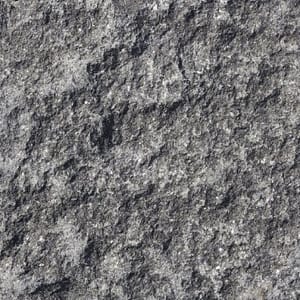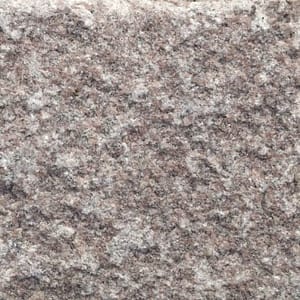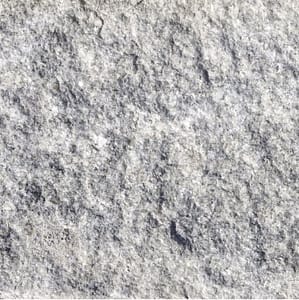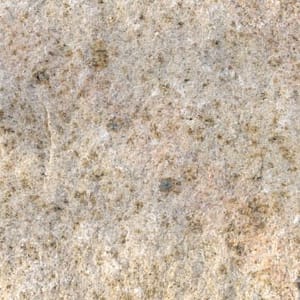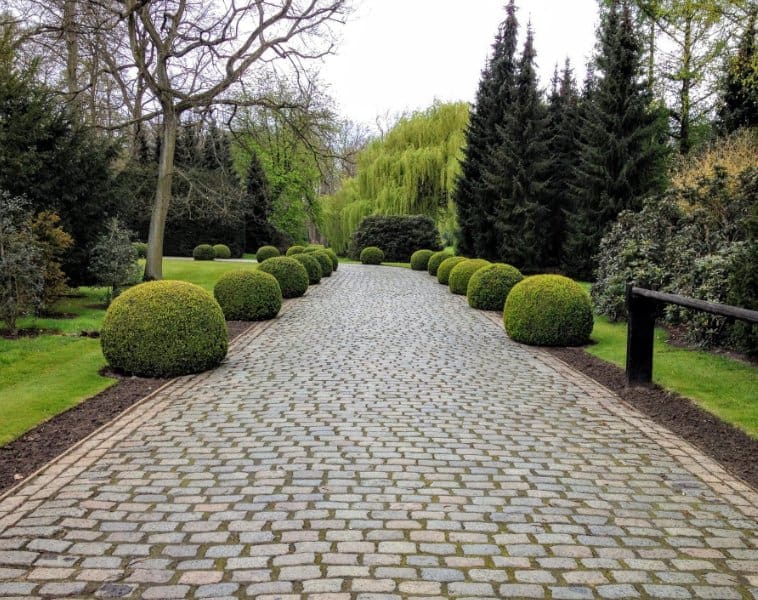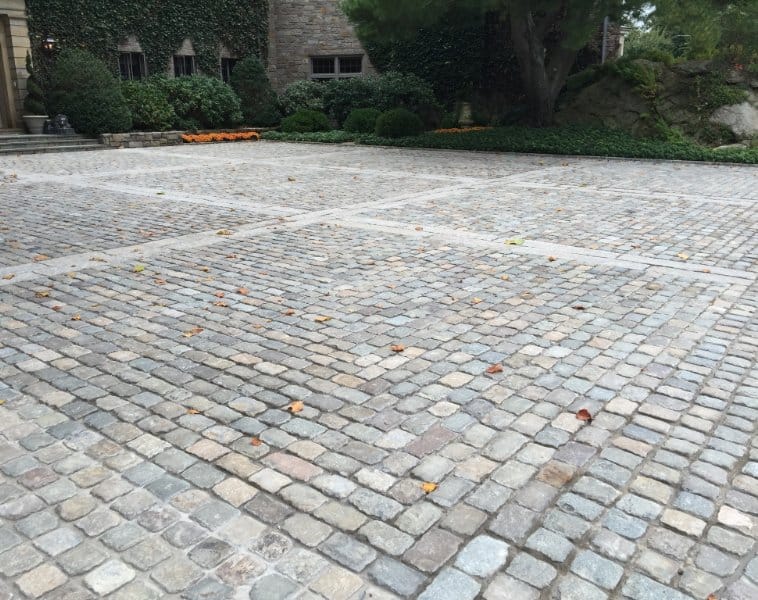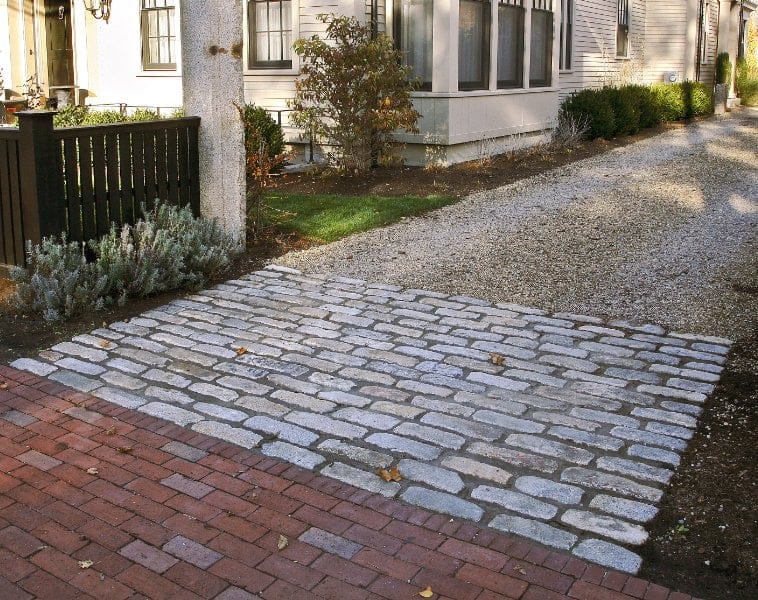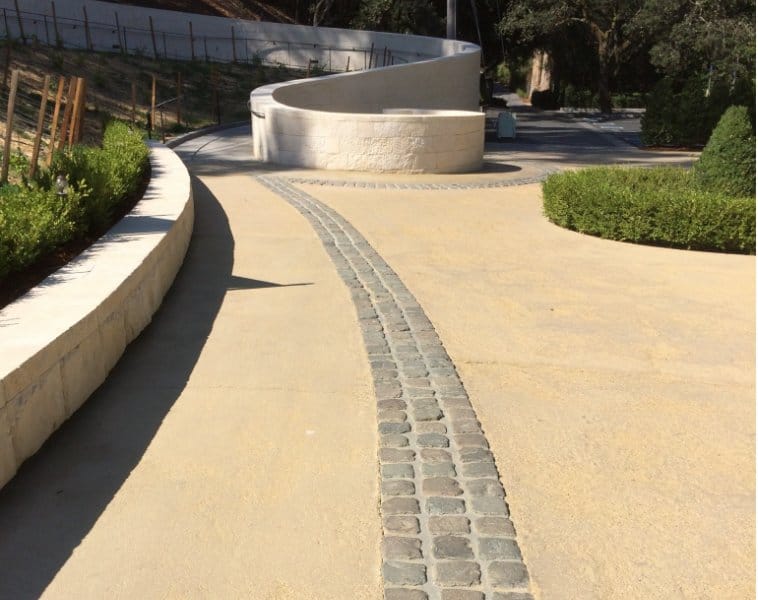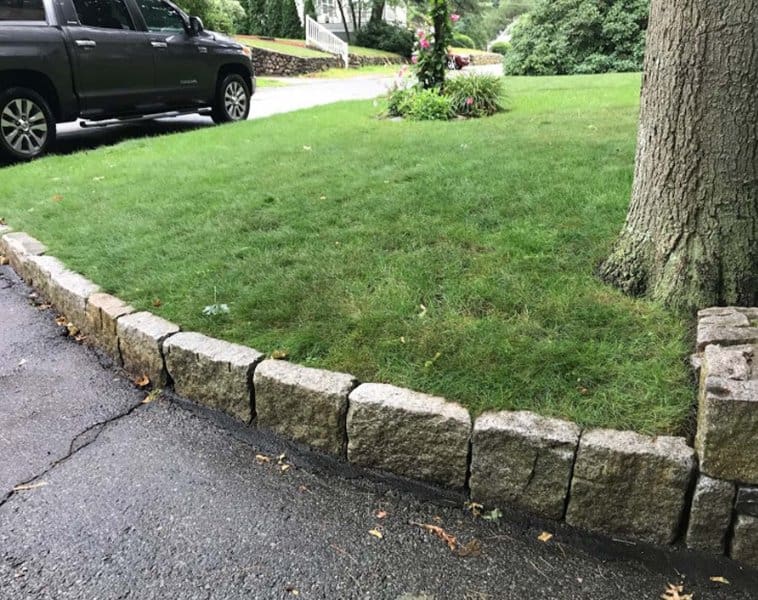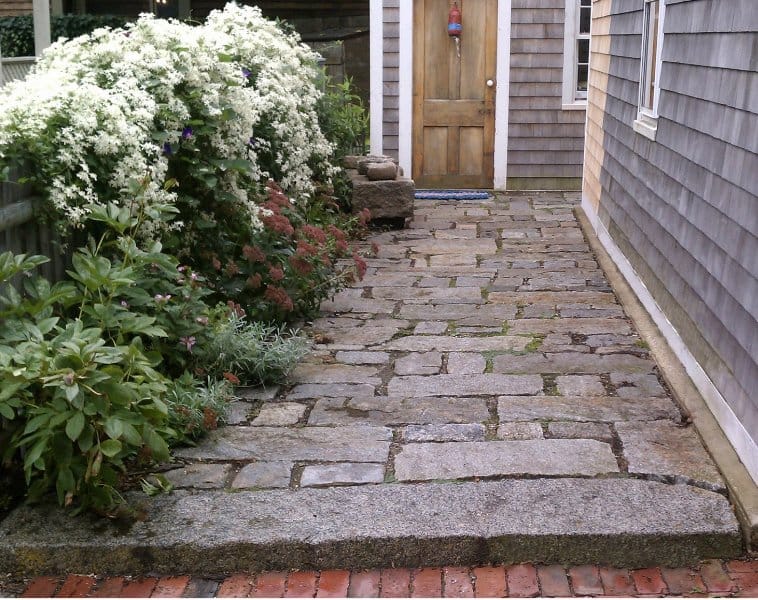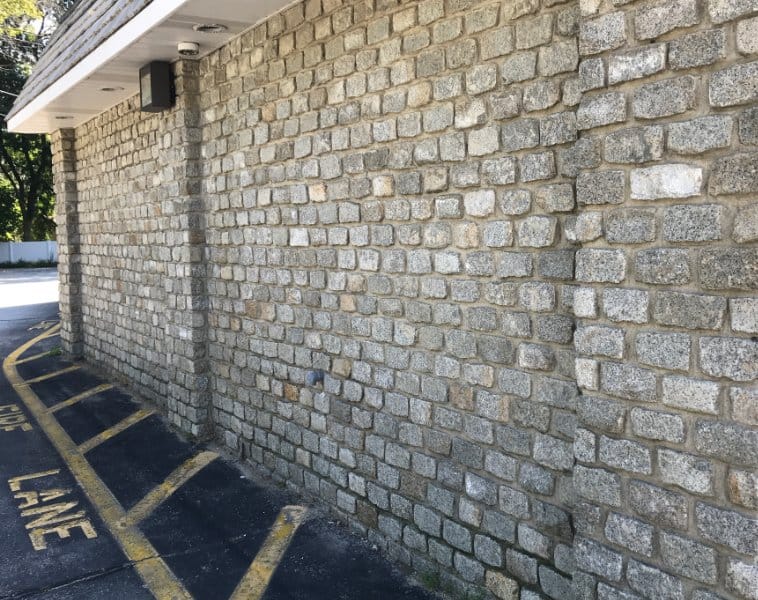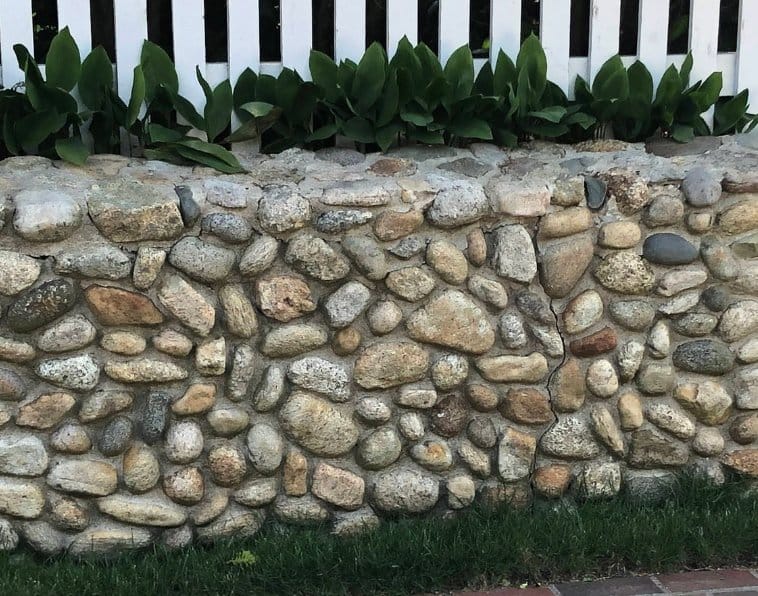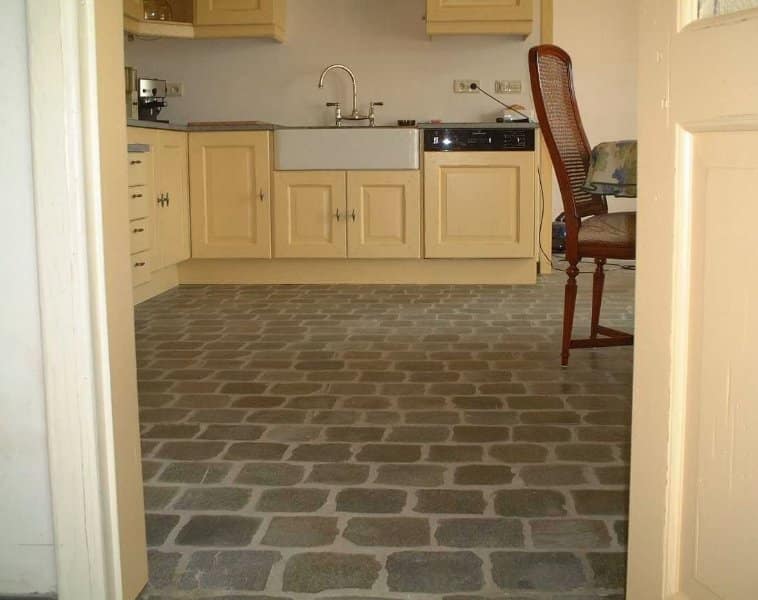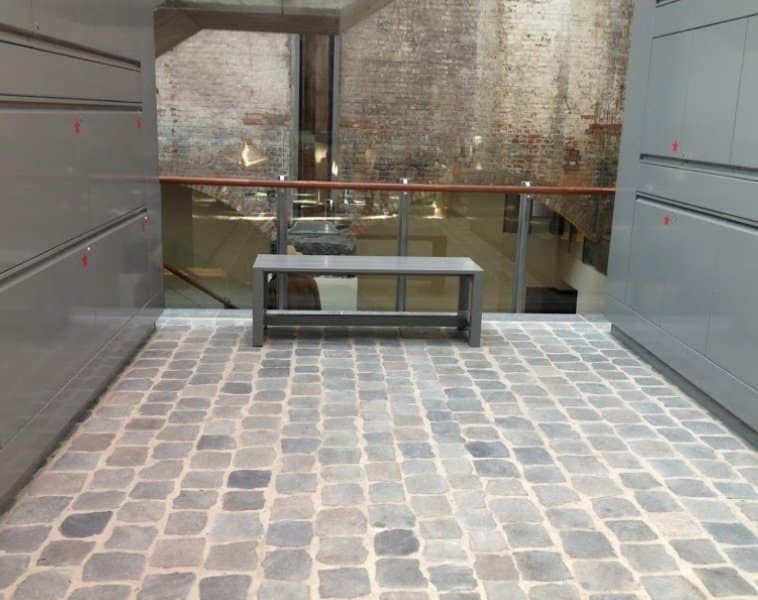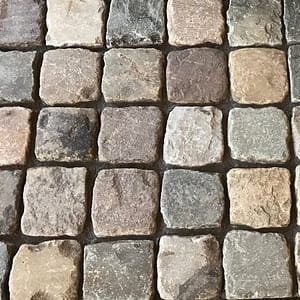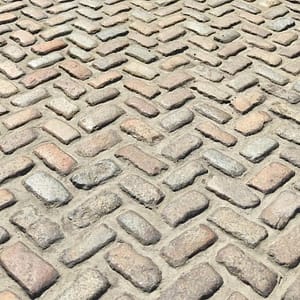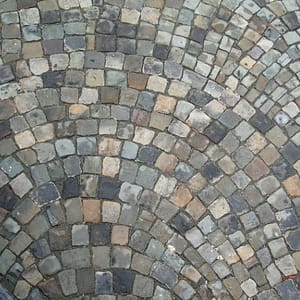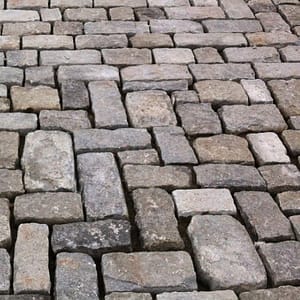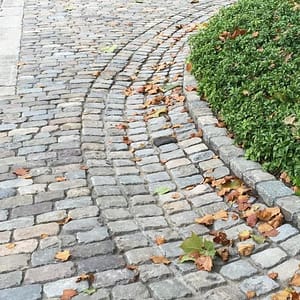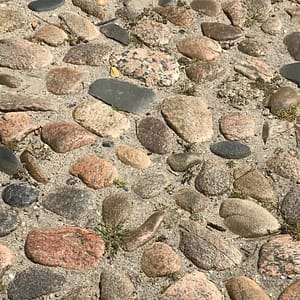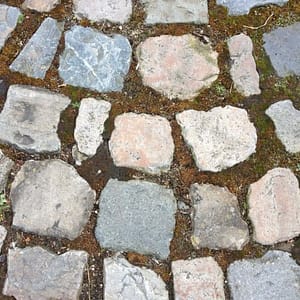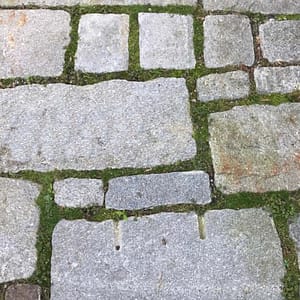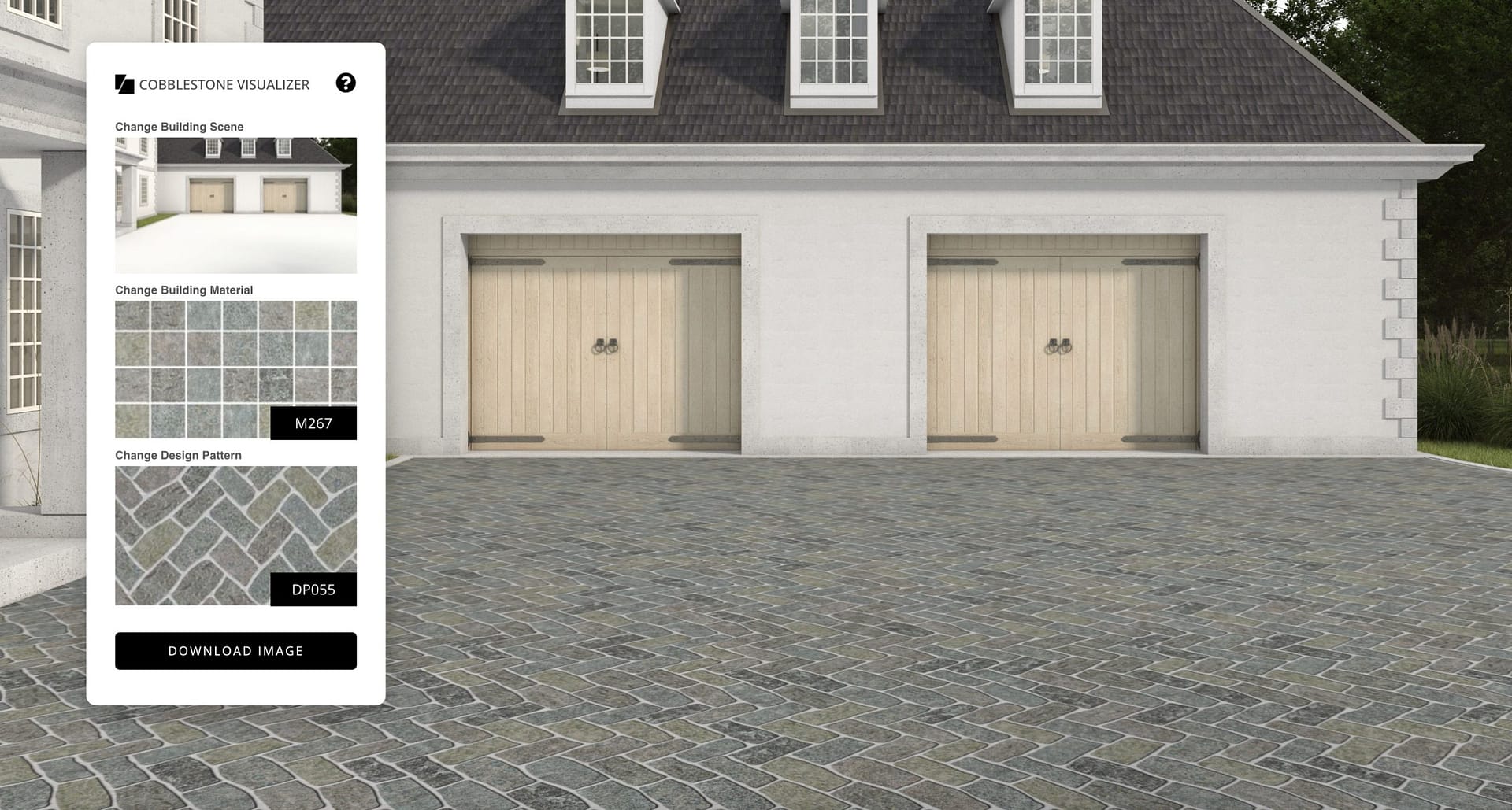COBBLESTONE
Timeless • Durable • Versatile
Cobblestone is a natural building material used mainly for driveways, but is also very commonly used for walkways, patios, and walls. The rustic reclaimed cobblestone, which comes directly from the historic streets of New England, the Midwest, and old world Europe, evokes a time gone by. But cobblestone can be elegant too! Newly fabricated cobblestone has all the character of reclaimed stone, but with a clean, modern look.
HISTORY OF COBBLESTONE
From Roman Times to Present Day
Cobblestone is ancient, with many pre-Roman cobbled streets dating back as far as the 3rd and 4th centuries. They’ve been used worldwide throughout history—mainly in Europe but also in Latin America—and are still in use and painstakingly maintained today (stones are replaced and arranged by hand).
In more modern times, ancient cobblestone became less popular making way for quarried granite setts or Belgian block, offering relatively regular, rectangular stones that could be more easily laid out in a pattern. These alternatives to ancient cobblestone allowed for a much smoother and safer ride for 19th century traffic. The stone from this time period is what most people picture when they think of cobblestones.
Although streets are where one would expect to find cobblestones, their uses have gone far beyond that in history. In part of New York state and Canada, where glaciers have retreated, cobblestone was used to build homes, taverns, schools, factories, churches, and more structures.
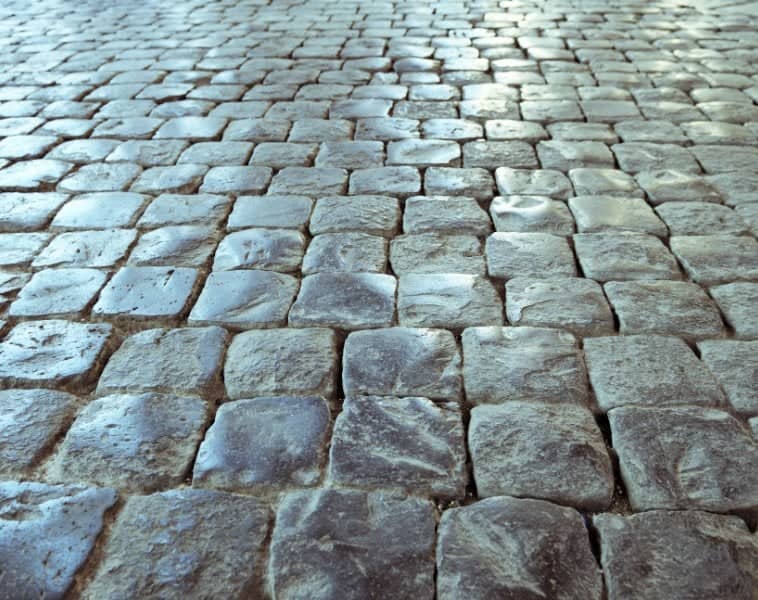
Ancient Roman Road
RECLAIMED COBBLESTONE
Imagine walking down the cobblestone streets to the top of a walled in town in Tuscany or through the crowded streets of Paris. Even in the states, exploring historic districts in Boston and Philadelphia, you’ll find cobblestone underfoot. This history and romance of years past can be repurposed to create timeless and reliable new structures.
Although reclaimed cobblestone has a rustic look and feel, it’s been tested (for centuries!) and is clearly a truly reliable paving material to this day. Typically set in sand or similar material, cobblestones allow water to drain off easily. Plus, they’re eco-friendly!
For more information on reclaimed cobblestones, see our blog post Reclaimed Cobblestone: The Most Ancient Paving Method.
Reclaimed Domestic Cobblestone
Entirely made of granite, reclaimed New England cobblestone is rugged and aesthetically beautiful. Midwest cobblestones are typically either granite or sandstone. Their colors are rich and include reds and purples along with grays and browns.
NEW ENGLAND
MIDWEST
SIZES – RECLAIMED NEW ENGLAND DOMESTIC
Although reclaimed cobblestones are not generally uniform in size, we put them into the following size categories. For reference, a road paver typically weighs 80 to 100 pounds each.

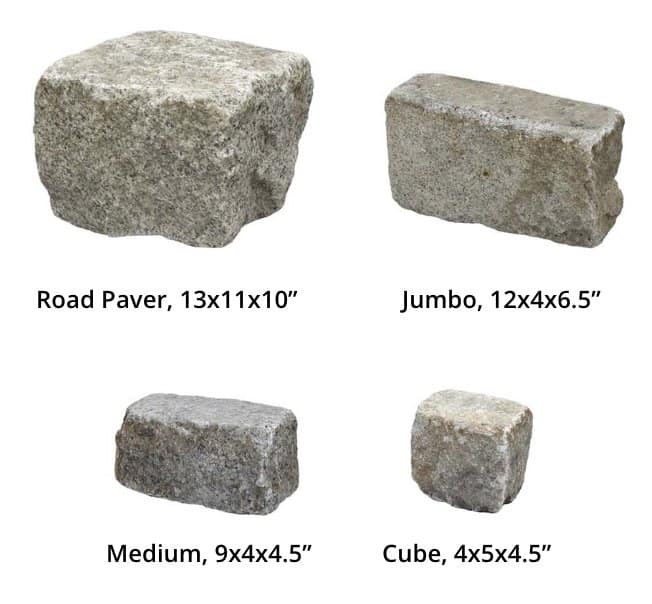
WORN TOP UP VS. WIDE SIDE UP INSTALLATION
Worn Top Up Installation
The most widely used method of installing reclaimed cobblestone is worn side up. The original worn surface (the top) is installed above the ground, facing up. This type of installation produces the historical signature worn look of the old world reclaimed cobble.
Wide Side Up Installation
This is an alternative installation whereby the cobblestone is turned on its side to cover more area and therefore becoming more cost-effective. In this case, the worn top is hidden underground, on its side.
Reclaimed European Cobblestone
Straight from the romantic roads and courtyards of old world Europe, these cobblestones will conjure up the feeling of times past right at your doorstep. What could be more authentic?
SIZES – RECLAIMED EUROPEAN
As mentioned above, reclaimed cobblestone sizes are approximate. Individual stones are handmade. That said, these are the size categories we put them into:

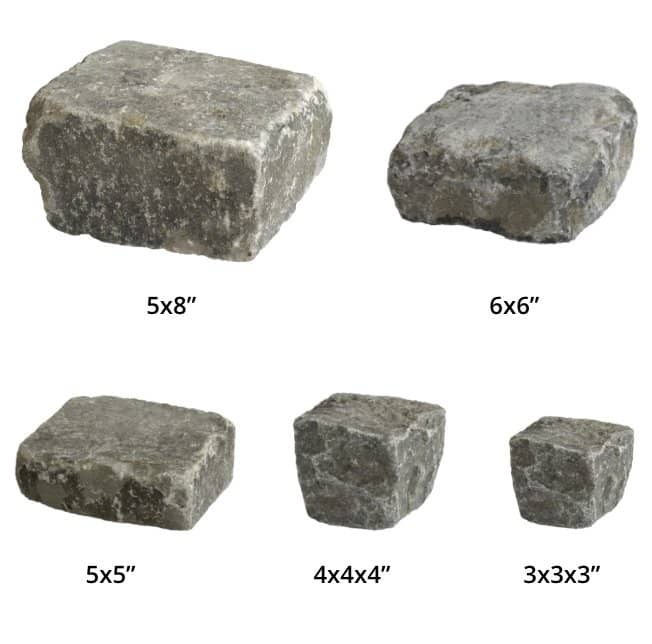
SLICED COBBLESTONES
European cobblestones are often sliced in half or cut thin for a more cost-effective installation. Sliced cobblestones may be installed flat side up, which produces a surface that can be walked on easily with high-heeled shoes. Flat side, thin cut cobblestones are often used for indoor flooring installations. Slicing the cobble in half or thinly also slices the cost for the consumer.
NEWLY FABRICATED COBBLESTONE
We can create new cobbles in all kinds of shapes, styles, colors, and finishes. You pick the stone, color, texture, scale, and whether your stone is reclaimed, local or imported. We’ll fabricate to your spec, for your desired look and style, and deliver it to your site.
SIZES – NEWLY FABRICATED

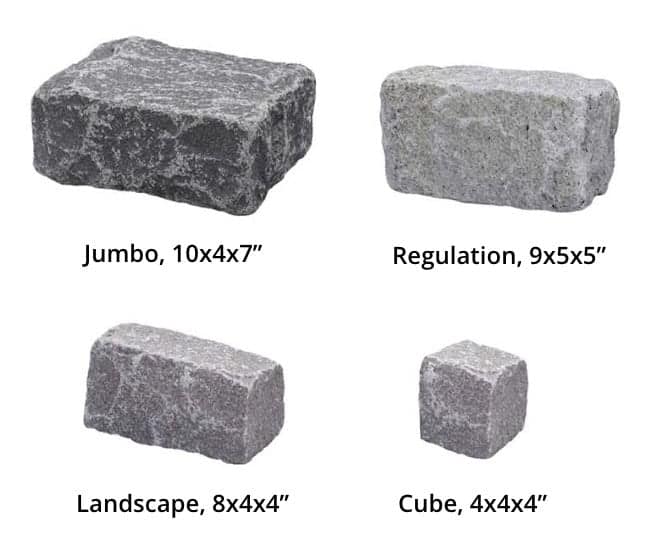
FEATURED PRODUCTS
COLORS - NEWLY FABRICATED GRANITE COBBLESTONES
COBBLESTONE USES
There are endless ways to use cobblestone in your building and landscape designs. Whether you’re looking to create a grand driveway, a unique walkway, or have the perfect rustic edging to your lawn, cobblestones can fit almost any use. Cobblestones can be sliced to make wall veneers or interior floor tiles. The veneers include round stones (we call them Beach Rounds).
Paving
Wallstone Veneer
Interior Floors
COBBLESTONE PAVING PATTERNS
Given the small size of the cobble, different patterns abound. The fan pattern for example is commonly seen on European streets this pattern imparts a distinctive look to paving applications. Rounds).
Cobblestone Alternatives / Unusual Mixes
For a unique and unusual look that really stands out, try one of these creative alternatives.

